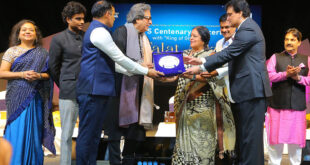The Kohinoor Diamond, renowned for its exquisite brilliance and captivating history, has journeyed through time and empires, leaving an indelible mark on the pages of history. From the heart of ancient India to the grandeur of the British Crown Jewels, this legendary gem has graced the heads of mighty rulers and ignited intrigue across civilizations. Join us as we trace the fascinating path of the Kohinoor Diamond through the kingdoms and dynasties that held it, uncovering the tales of power, passion, and legacy that have defined its passage.
Golconda – Birthplace of Radiance
The saga of the Kohinoor begins in the Golconda mines, where skilled artisans meticulously crafted the raw diamond into a radiant masterpiece. As the heart of the Golconda Sultanate, the diamond’s early history is intertwined with the legacy of rulers who recognized its value and potential. The Golconda rulers, such as Qutb Shahi and Mughal emperors, were among the earliest custodians of the Kohinoor, cherishing it as a symbol of their prowess.
Mughal Magnificence
The Mughal Empire, known for its opulence and cultural refinement, became a significant custodian of the Kohinoor Diamond. Emperor Shah Jahan, who commissioned the iconic Taj Mahal, held the diamond among his treasures. The gem adorned the famed Peacock Throne, a symbol of imperial splendor. The Kohinoor’s presence in the Mughal court added to its allure and legacy.
The Shifting Sands of Power – Nader Shah and the Persian Connection
In the 18th century, the Kohinoor embarked on a remarkable journey beyond India’s borders. Persian conqueror Nader Shah captured Delhi and claimed the Kohinoor among his spoils. The diamond’s transfer to Persia marked a pivotal moment in its history, underscoring its universal appeal and desirability among rulers across regions.
Return to India – The Sikh Empire and the British Raj
The Kohinoor Diamond found its way back to the Indian subcontinent when it came into the possession of the Sikh Empire, under the reign of Maharaja Ranjit Singh. The diamond’s presence in the Sikh court added a new chapter to its narrative. However, the diamond eventually found its way to the British East India Company following the Second Anglo-Sikh War. The terms of the Treaty of Lahore led to the Kohinoor’s transfer to the British Crown.
British Crown Jewels – A Gem of the Empire
The Kohinoor Diamond became an integral part of the British Crown Jewels, joining the likes of the Cullinan Diamond and the St. Edward’s Sapphire. It was displayed in the Tower of London and became a symbol of British imperial might. Its presence in the Crown Jewels added to the diamond’s global recognition and cemented its status as a jewel of enduring fascination.
Conclusion:
The Kohinoor Diamond’s journey through kingdoms and dynasties is a testament to its universal allure and timeless beauty. From Golconda to the British Crown, its path has been marked by the rise and fall of empires, the ambitions of rulers, and the admiration of generations. As we look back at its storied history, we are reminded of the diamond’s ability to transcend time and borders, captivating hearts and minds across civilizations. The Kohinoor Diamond remains a sparkling gem, not only in its physical form but also as a luminous embodiment of human history and aspiration.
References:
1. Balfour, I. (2009). Famous Diamonds. London: Antique Collectors’ Club.
2. Koch, S. (2016). The Politics of the Past in an Indian Diamond: The Koh-i-Noor and the British Crown Jewels. International Journal of Cultural Property, 23(4), 365-386.
3. Mukherjee, R. (2016). The Koh-i-Noor Diamond and the Mughals: Historical Disputes and Legal Contestations. Economic and Political Weekly, 51(2), 23-26.
4. Stronge, S. (2002). The Bejewelled Sumptuary Arts of the Indian Courts. Burlington Magazine, 144(1193), 165-173.
5. V&A Museum. (2021). The Story of the Koh-i-Noor Diamond. Retrieved from https://www.vam.ac.uk/articles/the-story-of-the-koh-i-noor-diamond
 Gawah (The Witness) – Latest News, Current Affairs, Politics, Sports, Religion, Literature, Technology, Education, National, Local – Hyderabad Telangana India World Fearless By Birth, Pristine by Choice – First National Urdu Weekly From South India – Latest News, Breaking News, Special Stories, Interviews, Islamic, World, India, National News
Gawah (The Witness) – Latest News, Current Affairs, Politics, Sports, Religion, Literature, Technology, Education, National, Local – Hyderabad Telangana India World Fearless By Birth, Pristine by Choice – First National Urdu Weekly From South India – Latest News, Breaking News, Special Stories, Interviews, Islamic, World, India, National News






